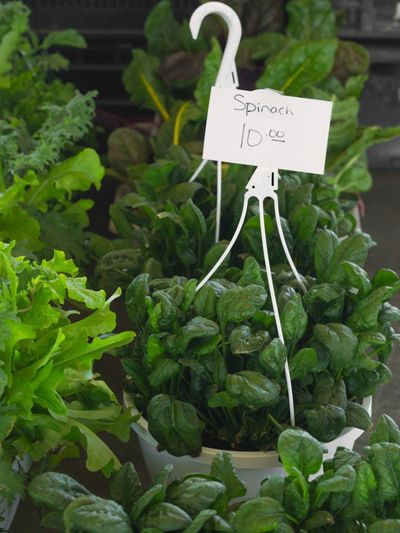Growing spinach inside is easier than you might think, especially baby varieties. Get some tips on indoor spinach plants and start planning your salad now.
Can Spinach Grow Indoors?
Spinach is a versatile green that is useful in salads, stews, soups, and stir fries. It is also quite easy to grow from seed. Most seeds will sprout in a week, and they grow rapidly, with leaves ready for use in a month. Best of all, indoor potted spinach can be used consistently and will grow new leaves. Greens of many types are among the easiest food crops to grow indoors. They sprout rapidly and take off with little special care. When you grow crops like spinach inside, you can avoid purchasing it in a supermarket, where contamination is often found. Plus, you know it’s organic and safe for your family. First start with your variety. You can grow standard or baby spinach, but the full-sized plants will need more room. Next, select a container. Shallow pots work well, as the spinach does not have a huge root depth. Then, purchase or make a good soil. It should be well draining, as spinach cannot handle soggy conditions.
Starting Indoor Potted Spinach
Lightly pre-moisten the soil and fill the container. Sow seeds one inch deep (2.5 cm.). For faster germination, place the container in a warm location and cover with plastic. Remove the plastic once per day to let excess moisture escape and prevent damping off. Keep the container lightly moist by misting. Once you see two pairs of true leaves, thin the little seedlings to at least 3 inches (8 cm.) apart. You can use these tiny plants in salad, so don’t throw them away! Indoor spinach plants need to be in fairly bright light. Purchase a plant light if you have a low light situation.
Tips on Growing Spinach Inside
If you live in a region with hot temperatures year-round, purchase a variety that is low to bolt and keep containers in the coolest room of the home. To keep the plants producing those tasty leaves, give them diluted liquid fertilizer after a month. Use an organic formula to ensure the safety of your food or wait at least a week before harvesting any leaves. Even indoor plants can get bugs, so keep a careful eye out and treat with organic pesticides if necessary. Rotate your container every few days so all sides get good light exposure. When the greens are a few inches (8 cm.) apart, start harvesting. Just take a few leaves from each plant for continued production and enjoy.
